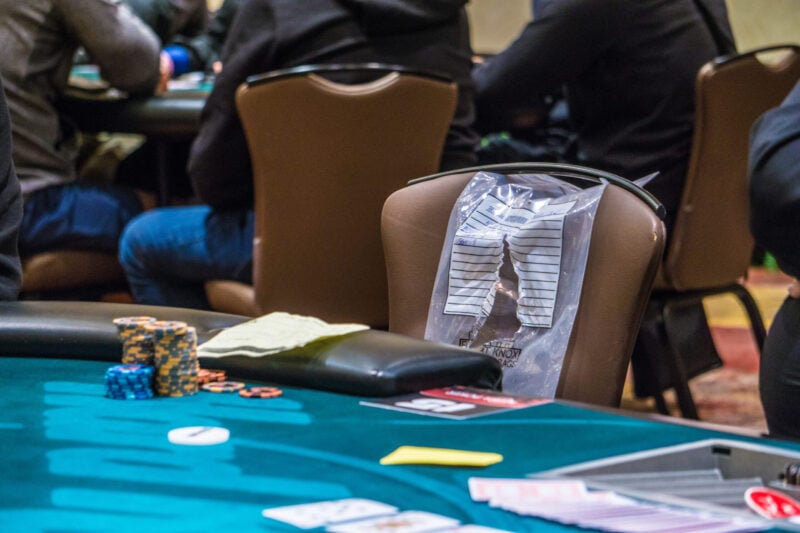Last week I was saddened to learn of the passing of Bob Ciaffone, who was the first person I ever took a poker lesson from. When I told my friend that I wanted to learn about poker, one of the books he gave me was “Middle Limit Holdem Poker,” the book Bob wrote with Jim Brier.
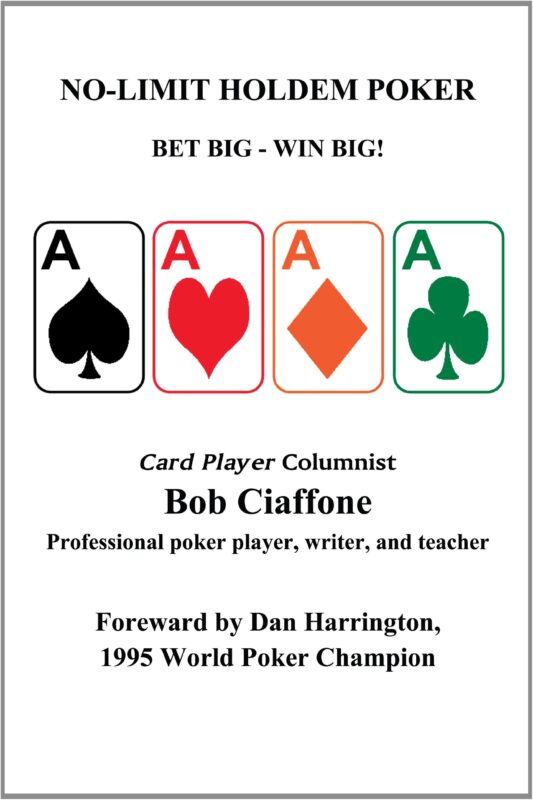
I’m a poker coach myself these days, but Bob was the first coach I ever heard of.
World’s first poker coach?
I had no idea that poker coaching was a thing until I heard about Bob and, when I called him, he was friendly, charming, and helpful. When I told him that my goal was to play poker for a living, he assured me that it could be done, and that he thought I could do it.
I only took two lessons from Bob, but I talked to him on the phone a few other times over the years, as well. He called to tell me that he enjoyed my book, which was a real high point for me. The guy whose book I read at the beginning of my career had called me to tell me that he liked my book. A book that I wrote with my pal Adam Stemple, who was the person who loaned me Bob’s book in the first place.
I continued to read Bob’s columns in “CardPlayer,” and when we talked, he always invited me to come visit him at his home. We bonded because we were both originally from Michigan, and Bob lived in Saginaw for the last 20 years or so of his life. I wish I had made the time to take him up on his offer.
Players who are newer to the game may never have heard of Bob, the man people called “The Coach,” but to the old school, he was a beloved figure. I was right on the cusp of that — much younger than Bob — but part of the last generation that started learning about the game from reading books.
I’ve read the other things being written about him online: obituaries written by people who never met him. Those articles, mostly compilations of his achievements and a list of the places he lived, are just fine: there’s nothing wrong with them. But a simple list of achievements and residences doesn’t tell the whole story.
My interactions with Bob over the years were great. He was friendly, funny, and warm when I spoke with him on the phone. But I didn’t have enough personal experience with him to write the article I wanted to, something that would bring the man to life for generations of poker players who might not know anything about him. So, I talked to a few older players who knew him, taking notes to put something together.
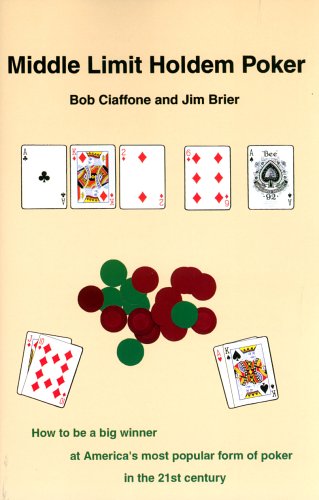
Then I remembered that I knew someone who knew all about the man. His coauthor, Jim Brier. I shot Jim a text and he called me right away. Jim was happy to talk about Bob.
A talk with Jim Brier
Jim and I talked for an hour or more, and I learned an awful lot about him and Bob in that time. Things that I didn’t know; stories that made me smile, insight into an old-school pro who made his living in a poker world that I never knew. I caught scent of that world when I was just starting out, a quick conversation with Dan Harrington, hearing stories from Doyle at a tournament table, and listening to the old-timers talk about how things were back before the poker boom, but it was never my world. I played my first hand of Texas Holdem online.
“The most striking thing about Bob, aside from his accomplishments in poker and other games, was his honesty,” Brier said. It was the first thing he thought to tell me about Bob. “He was one of the most honest and morally upright people I ever met in my life, and I was surprised to find that from a poker pro.”
The beginning of Brier’s interaction with Bob came after he sent Bob a letter (in the days before Bob had a website) with a list of 25 hands that he had questions about. He included a cover letter introducing himself and told Bob that he had done well in Stud games, but was having trouble with the new game of Texas Hold’em. Brier was living in Houston and driving to Lake Charles, Louisiana, to play hold’em on weekends. He also included a check for $200 because he didn’t know what Bob charged for lessons.
Bob’s response arrived a few weeks later. It included a cover letter and detailed answers to the 25 questions Brier had sent. Bob also wrote that he charged $25 per hour for poker coaching and that the 25 hands had taken him about two hours. He offered to send back a refund check for $150 or to work with Brier on helping his game until the money was spent.
Brier chose to continue working with Ciaffone, and his game improved. Soon he was beating the $20/40 game at a good clip, winning more than $20K in a few years: a nice side-hustle in the late ’90s, and a win rate of around $35 an hour.
Eventually, Brier and Bob met up in person in Tunica, Mississippi, and Brier brought all their written correspondence with him. He told Bob that he thought there was enough material for a book, Ciaffone agreed, and Brier started putting things together.
‘Middle Limit Holdem Poker’
That book became “Middle Limit Holdem Poker,” the book I was given back in 2001 by my pal Adam at a bar in Minneapolis. That interaction changed the course of my life, and Bob’s book was a part of it. At the time, I had never played a hand of Texas Hold’em. Six months later, I quit my job to play full time and my life was forever changed.
Also among the books that Adam gave me was one by Lou Krieger, who I was lucky enough to befriend for a few years before he died. I’ve also been lucky enough to count Dr. Alan Schoonmaker as a friend for years now — another poker author whose early work, “The Psychology of Poker,” was in the pile of books I studied that first year.
To be an aspiring pro and a writer, and end up with these men seeing me as a peer, was amazing. It made me feel like I had achieved some of my goals, becoming like the men I had studied with and learned from. And who I really wanted to be in those early days, was Bob Ciaffone.
I wanted to be an expert, making my living at the tables and writing books about the game. I wanted to teach other people to play. I wanted to break ground and learn things about the game that no one else knew. I wanted the respect of my peers in the poker world. Bob had all those things.
When I won my bracelet in 2014, I spoke with Bob the next day. Most people texted or congratulated me on Facebook or Twitter, but Bob was old school; he called me. I told him that I did well during the Hold’em rounds (the tournament I won was a HORSE event) and he commented that “people in mixed games are terrible at hold’em. They usually play the Stud games okay, but no one even wants to play during the Hold’em rounds.”
He was right. I made a lot of my money in that event with aggression during the Hold’em rounds, at one point raising and winning the blinds six hands in a row at the final table. My skill in Limit Hold’em, and in fixed-limit games in general, started with Bob.
“Middle Limit Holdem” was the first book to rely extensively on hand histories. Since then, a number of books have followed suit. Gus Hanson’s book is a hand-by-hand replay of a tournament, and the highly regarded series, “Winning Poker Tournaments One Hand at a Time,” follows three online players through tournaments as well. I’ve made sure to include hand histories extensively in anything I write because I saw how effective they are right from the start.
Broke, but never busted
Bob was so honest that when he went broke, he told people the truth about it. I don’t know many poker players who do that, though I know an awful lot of them who have gone broke over the years. Bob would just say, “It’s not a big deal, you just get a job and build it back up.” That was how he ended up moving to California and getting a job as a floor at Hollywood Park, though working for someone else just didn’t agree with him.
It wasn’t long before he became a prop player at Hollywood Park instead, rebuilding his bankroll and playing as high as $150/300 for a brief time, though he mostly stuck to smaller limits. And while he was known for writing about fixed-limit Hold’em, Bob was a fierce advocate for the big-bet games, often arguing with Mason Malmuth over the value of big-bet poker.
When No-Limit Hold’em became the dominant game of the poker boom, Bob felt vindicated. People had doubted him for years, but now it was clear he was right, and the big-bet games were here to stay.
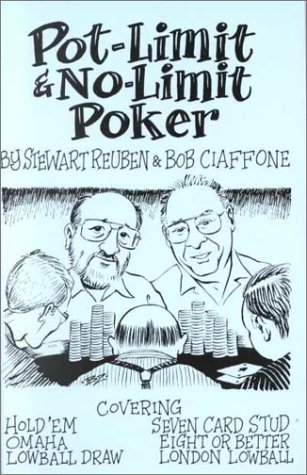
The big-bet games are what brought him to Las Vegas in the first place. He had played Pot-Limit Omaha in Detroit a few times and loved it, but games were scarce, so he moved to Sin City where he could play every day. That went well for many years until the rough patch sent him to California.
He would still return to Vegas during the WSOP, usually backed by his good friend Dan Harrington, who would pay his entries into tournaments and back him in cash games as well. You have to really trust someone to back them in cash games. In fact, I have often advised people not to back players in cash games at all. It just goes badly too often.
And Harrington is notoriously tight with money, so the fact that he trusted Bob with his money in cash games — in Vegas — speaks to how honest Bob was. Everyone I’ve talked to about him has mentioned that trait: if Bob saw a nickel on the sidewalk he’d pick it up and ask around for the owner.
More than just a poker player
Bob’s gambling career started in the ’50s, playing pool for money in local gambling halls as a teenager, but things really took off when he discovered backgammon parlors. In addition to pool sharking and backgammon, Bob was a chess grandmaster (his rating peaking around 2250), a master bridge player, pinochle ringer, and he once finished third in the WSOP Main Event.
Just listing the man’s accomplishments will put some serious wear and tear on this old keyboard. He played chess with Bobby Fisher, shot pool with Willie Mosconi, and once started a poker game in Nepal with Blackie Blackburn. He loved to play poker with Main Event winner Jack Keller, and wrote a column for “CardPlayer Magazine” for many years.
Very sad to hear of the passing of Bob Ciaffone. His poker books were some of the best available 20-30 years ago. His "Robert's Rules of Poker" influenced poker room regulations literally world-wide, decades before groups like the Tournament Dealers Association were in existence.
— Steve Roselius (@SRoselius) May 15, 2022
He also wrote “Robert’s Rules of Poker,” which outlined a consistent set of rules for many of the games we play today, and advised New Jersey and Florida about rule sets when they legalized poker. He ran a backgammon parlor, was president of the Michigan Chess club, and wrote books on other games too. Those last few paragraphs were just me hitting some of the high points, but I could go on about his accomplishments all day. What a life.
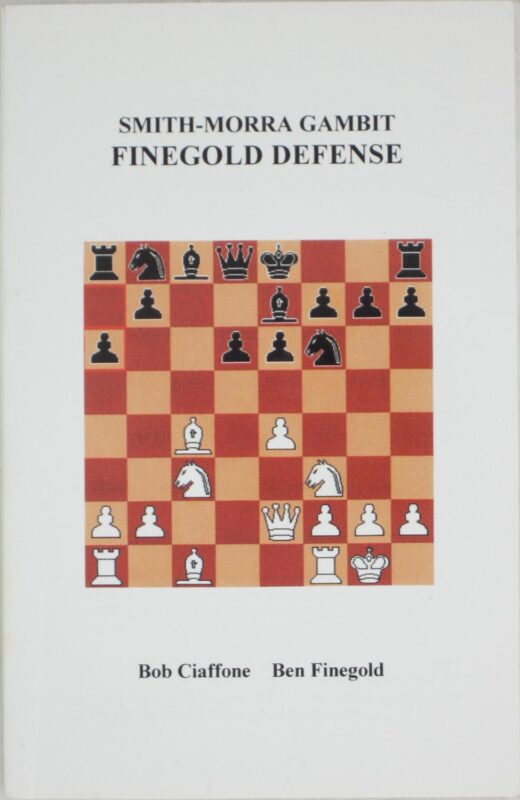
In 1997, Bob’s mother died and he moved to back to Saginaw, Michigan, to take care of his father. He sank most of his bankroll into buying a house and having work done on it to make it more accessible for his dad, who was handicapped. He paid the bills by playing at Soaring Eagle in nearby Mt. Pleasant, and continued to play chess and bridge at a high level until his passing last week.
Here’s to you Coach — a remarkable life and a remarkable man. Thanks for the knowledge, inspiration, and encouragement. We didn’t share as many conversations as I would have liked, but they meant a lot to me. And everyone I talked to about you this week said the same thing: in the world of professional gambling, a place with more than its share of hucksters, grifters, and self-centered loud mouths, you were straight as an arrow and as friendly as a golden retriever.
Goodbye to one of the good guys. We could use a few more like you.
